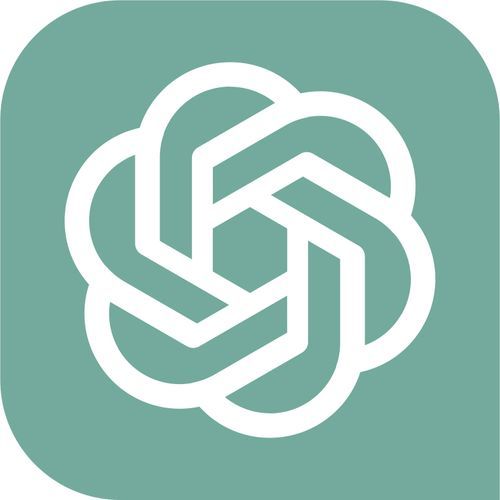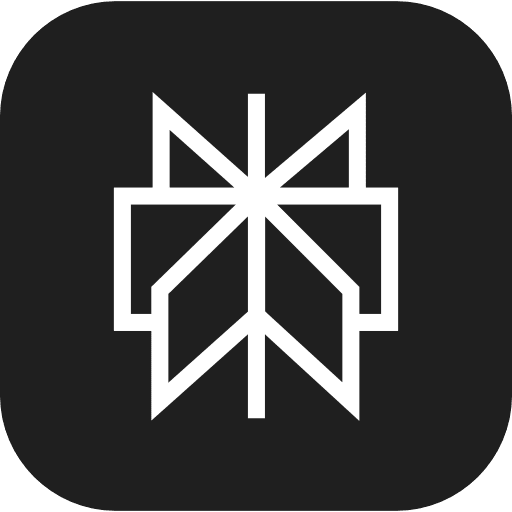Library of teambuilding games & icebreakers


Safety debate
Organize a debate on various safety topics (e.g., the importance of PPE, the best ways to handle emergencies). Divide employees into teams and assign them different positions to argue. Judges score the debates and the winning team receives a prize.Debates of any kind encourage critical thinking and effective communication in your workplace, so why not have a debate about important safety issues? They provide a platform for employees to express their views on safety and learn from each other. Plus, it’s a lively and engaging way to discuss safety.
Safety debate
How to play:
Organize a debate on various safety topics (e.g., the importance of PPE, the best ways to handle emergencies). Divide employees into teams and assign them different positions to argue. Judges score the debates and the winning team receives a prize.
Debates of any kind encourage critical thinking and effective communication in your workplace, so why not have a debate about important safety issues? They provide a platform for employees to express their views on safety and learn from each other. Plus, it’s a lively and engaging way to discuss safety.
Gallery



Video


Mind Mapping
Provide each team member with a large sheet of paper or a whiteboard and markers. Choose a central theme or problem and ask individuals or teams to create mind maps to explore creative solutions and connections.
Mind Mapping
How to play:
Provide each team member with a large sheet of paper or a whiteboard and markers. Choose a central theme or problem and ask individuals or teams to create mind maps to explore creative solutions and connections.
Materials needed: Large paper or whiteboards, markers
Benefits:
- Visual brainstorming: Unleash the power of visual thinking and witness the magic as your team maps out a landscape of ideas. This activity brings creativity to life in vivid detail, transforming the mundane into a visually captivating tapestry of possibilities.
- Idea generation powerhouse: Brace yourself for an explosion of creativity as your team members pour their thoughts and insights into the mind maps. This collaborative activity becomes a breeding ground for innovative ideas, with each contributor adding fuel to the creative fire, igniting a whirlwind of possibilities.
Gallery



Video


Memory Wall Game
Strengthen team bonds by visually representing shared memories and achievements.
Memory Wall Game
Strengthen team bonds by visually representing shared memories and achievements.
Materials needed:
- Large sheets of paper or a designated wall space
- Markers, colored pens, and any decorative materials
Instructions on how to play:
- Assign each team the task of creating a visual representation of their shared memories and achievements on a wall or large sheets of paper.
- Encourage creativity in showcasing significant moments, accomplishments, and team milestones.
- After completion, each team presents their Memory Wall to the entire group, sharing stories and reflections.
Why it's a great team building game:
- Memory lane stroll: Encourages reflection on shared experiences, fostering a sense of nostalgia and unity.
- Visual storytelling: Promotes creativity and collaboration in visually expressing the team's journey.
- Celebration of success: Recognizes and celebrates achievements, boosting team morale.
Top tip to help the game run smoothly: Provide a variety of materials to spark creativity. Encourage teams to use drawings, quotes, or any artistic elements that resonate with the memories they want to capture.
Gallery



Video


Swedish Story
Challenge your team to think on their feet as they make up a story on the spot! In Swedish Story, the storyteller must make decisions quickly as they’re bombarded with random words.
Swedish Story
Challenge your team to think on their feet as they make up a story on the spot! In Swedish Story, the storyteller must make decisions quickly as they’re bombarded with random words.
Great for: Public speaking, decision-making
Duration: 5-10 minutes
Players: 4+
You’ll need: Nothing
How to play Swedish Story
Setup: Divide your group into teams of about 4-5 players then ask each team to pick one person to be the storyteller.
To play: The storytellers are given a topic to talk about. As they start to tell their made-up story, the other members of the team chip in with random words that the storyteller must incorporate into their story. For example, if the storyteller is talking about a hurricane, the other players might call out words like “cow,” “combine harvester,” or “Elvis Presley!” The aim is for the storyteller to maintain their composure as they incorporate irrelevant words and phrases. When the time runs out, you can end the game or play again with a different topic and storyteller.
Gallery



Video


One-word check-in
One-word check-in is a quick activity that helps gauge the mood and mindset of all team members. It’s ideal as a warm-up or to start a meeting with a pulse check.
One-word check-in
One-word check-in is a quick activity that helps gauge the mood and mindset of all team members. It’s ideal as a warm-up or to start a meeting with a pulse check.
Set up:
In a circle, ask each team member to describe their current feeling, focus, or attitude in just one single word. They might give you positive input like motivated or focused, but they might let you know how tired and overwhelmed they feel, so it’s important to listen closely. Once everyone has spoken, look for recurring themes and reflect on those as a group.
Gallery



Video


Paper airplane race
Like the pencil javelin, the paper airplane race centers on how far you can get your paper airplane to fly. Each team constructs their best engineered plane and marks where they ultimately land. Each person on the team should have a chance to fly the place and the team that gets the furthest is declared the winner.
Paper airplane race
How to play Paper airplane race
Like the pencil javelin, the paper airplane race centers on how far you can get your paper airplane to fly. Each team constructs their best engineered plane and marks where they ultimately land. Each person on the team should have a chance to fly the place and the team that gets the furthest is declared the winner.
Gallery



Video


Impromptu Shark Tank
If you’re building a multi-day agenda and have a couple hours to kill, put together a short-notice shark tank. The key is not to give too much notice - remember, these activities don’t require prep work and the last minute nature of idea generation is sure to lead to more creativity and laughter. Have small teams brainstorm and come up with a few ideas, and then present their best idea to a panel of judges who will decide if it’s worth investing in.
Impromptu Shark Tank
How to play Impromptu Shark Tank
If you’re building a multi-day agenda and have a couple hours to kill, put together a short-notice shark tank. The key is not to give too much notice - remember, these activities don’t require prep work and the last minute nature of idea generation is sure to lead to more creativity and laughter. Have small teams brainstorm and come up with a few ideas, and then present their best idea to a panel of judges who will decide if it’s worth investing in.
Gallery



Video


ABC game
Did you ever play this game on roadtrips as a kid? Capture some of that magic by playing it with your work pals. You can actually play this game anywhere, which makes it perfect for an office or conference room event.
ABC game
Did you ever play this game on roadtrips as a kid? Capture some of that magic by playing it with your work pals. You can actually play this game anywhere, which makes it perfect for an office or conference room event.
How to play ABC game
However, since the game uses letters, you will need to make sure there are sufficient posters, papers, or other documentation around. To play, split the group into two or more teams.
The groups should have even numbers and also be relatively small - bigger groups make the game too easy and then it ends faster. Instruct every team to go around the space and find items that begin with the letters A - Z. For example, for “A”, someone might find a desk plate for “Adam”, for “B”, someone might see a “Suite B” sign, and for “C”, someone might find a paper that says “checklist” on it. The first team to run through the entire alphabet wins.
Gallery



Video


Safety bingo blitz
Create bingo cards with different safety-related actions or reminders in each square (e.g., "wore safety goggles," "reported a hazard"). Distribute these cards to employees and encourage them to mark off squares as they observe these actions throughout the day. The first person to get a bingo wins a small prize.Safety bingo blitz makes safety awareness engaging. It's like regular bingo but with a twist that reinforces good safety practices. Everyone loves a good game of bingo, and it's a great way to keep everyone alert and involved in maintaining a safe work environment.
Safety bingo blitz
How to play:
Create bingo cards with different safety-related actions or reminders in each square (e.g., "wore safety goggles," "reported a hazard"). Distribute these cards to employees and encourage them to mark off squares as they observe these actions throughout the day. The first person to get a bingo wins a small prize.
Safety bingo blitz makes safety awareness engaging. It's like regular bingo but with a twist that reinforces good safety practices. Everyone loves a good game of bingo, and it's a great way to keep everyone alert and involved in maintaining a safe work environment.
Gallery



Video


Crisis scenario problem-solver
Teams are given a fictional crisis, like a hacked server or a flooded event venue, and they have to come up with solutions to save the day. Remote workers focus on virtual solutions, while in-office workers handle the on-the-ground details.In this hybrid version, the remote team is tasked with brainstorming virtual fixes—like tech solutions, backup plans, or virtual client support. Meanwhile, the in-office team works on practical strategies to tackle the crisis on-site, whether that’s coordinating logistics, handling communications, or finding last-minute resources. Both teams need to collaborate and stay in sync under time pressure to solve the crisis together. Finally, everyone shares their strategies to see how they tackled the issue from different angles. It’s a fun, fast-paced way to boost problem-solving skills while bringing remote and office workers together.
Crisis scenario problem-solver
Explanation:
Teams are given a fictional crisis, like a hacked server or a flooded event venue, and they have to come up with solutions to save the day. Remote workers focus on virtual solutions, while in-office workers handle the on-the-ground details.
In this hybrid version, the remote team is tasked with brainstorming virtual fixes—like tech solutions, backup plans, or virtual client support. Meanwhile, the in-office team works on practical strategies to tackle the crisis on-site, whether that’s coordinating logistics, handling communications, or finding last-minute resources. Both teams need to collaborate and stay in sync under time pressure to solve the crisis together.
Finally, everyone shares their strategies to see how they tackled the issue from different angles. It’s a fun, fast-paced way to boost problem-solving skills while bringing remote and office workers together.
Gallery



Video


Hypeman
Whether you’re onboarding new employees or simply want your current employees to form a more cohesive unit, Hypeman’s sure to help. Incorporating personal introductions and an element of role play, it’s a popular activity that never fails to create a positive atmosphere in the office!
Hypeman
Whether you’re onboarding new employees or simply want your current employees to form a more cohesive unit, Hypeman’s sure to help. Incorporating personal introductions and an element of role play, it’s a popular activity that never fails to create a positive atmosphere in the office!
How to play Hypeman
Give it a shot by dividing the team into groups of 3 and asking them to assign themselves roles:
- Player 1 has to share some basic personal information with the group (e.g. where they’re from, what they do, what hobbies they have, and so on)
- Player 2 introduces Player 1 to the audience by recounting what they just learned about them in a simple, matter-of-fact manner
- Player 3 is the “Hypeman”. Their task is similar, except they introduce Player 1 in an exaggerated, hyperbolic way that makes them sound amazing!
For instance, Player 2 might introduce Player 1 by saying, “This is Arthur. He’s a salesman for our company who enjoys playing tennis at the weekends.”
Then Hypeman would step in and say, “Here’s Arthur – AKA, the coolest guy I know! He’s so good at his job that he could sell an ice pack to an Inuit! Oh, and he wields a tennis racket like Roger Federer too. Honestly, you’d be a fool not to be his pal.”
You’d then mix up the roles so everyone had a chance to be the Hypeman (and to be hyped by their colleague!). Encourage witty and outlandish claims; crazy compliments that make people laugh. You could even go a step further and award prizes for the most successful Hypeman – as voted by the group!
Gallery



Video


Instant win games
Instant gratification is a powerful motivator for most people. If you want people to buy more of your product, try putting together a game where they can find out if they won or lost immediately. For example, having people scratch to win, spin a wheel, or pull a lever on a slot machine are all simple actions that could result in an exciting prize for your customers. It can be as simple as a retail store putting together a wheel to spin that has various prizes or discounts attached, and asking each customer if they want to give it a whirl. If you put it near the front of your store, you may be surprised how many people stop in. Make sure to promote it (and the winners) on social media for even more traction.
Instant win games
How to play Instant win games
Instant gratification is a powerful motivator for most people. If you want people to buy more of your product, try putting together a game where they can find out if they won or lost immediately. For example, having people scratch to win, spin a wheel, or pull a lever on a slot machine are all simple actions that could result in an exciting prize for your customers.
It can be as simple as a retail store putting together a wheel to spin that has various prizes or discounts attached, and asking each customer if they want to give it a whirl. If you put it near the front of your store, you may be surprised how many people stop in. Make sure to promote it (and the winners) on social media for even more traction.
Gallery



Video


Web navigation
This is another outdoor-appropriate game that many people enjoy - especially during beautiful weather. You’ll need two ropes, some strong poles or trees, and a supervisor for each team participating. Begin by tying ropes from one pole or tree to another to form a rectangle. Use the other rope to connect the rectangle from the top to the bottom, to form holes in a variety of shapes and sizes. Once the “web” is formed, have everyone take turns trying to make it through the ropes without touching it. The game is a success when all members of the team make it through - with their teammates help!
Web navigation
How to play Web navigation
This is another outdoor-appropriate game that many people enjoy - especially during beautiful weather. You’ll need two ropes, some strong poles or trees, and a supervisor for each team participating. Begin by tying ropes from one pole or tree to another to form a rectangle. Use the other rope to connect the rectangle from the top to the bottom, to form holes in a variety of shapes and sizes. Once the “web” is formed, have everyone take turns trying to make it through the ropes without touching it. The game is a success when all members of the team make it through - with their teammates help!
Gallery



Video


Moral dilemma
Similar to a “would you rather” game, this activity centers on ethical dilemmas. Players should try to flex their moral problem-solving muscles by tackling a social issue. For example, Scruples is a popular board game that can be played. Or, you can look online for versions of games like Dilemma or Quandary. This is a great way to learn more about your colleagues while getting a peek at the way they think.
Moral dilemma
How to play Moral dilemma
Similar to a “would you rather” game, this activity centers on ethical dilemmas. Players should try to flex their moral problem-solving muscles by tackling a social issue. For example, Scruples is a popular board game that can be played. Or, you can look online for versions of games like Dilemma or Quandary. This is a great way to learn more about your colleagues while getting a peek at the way they think.
Gallery



Video


Frostbite
Frostbite’s an effective trust-building exercise that encourages strong communication and listening skills – not to mention teamwork as a whole. Like the other activities in this section, it works best if you’re in an open space, so head on down to the local park (or clear an area in the office!).
Frostbite
Frostbite’s an effective trust-building exercise that encourages strong communication and listening skills – not to mention teamwork as a whole. Like the other activities in this section, it works best if you’re in an open space, so head on down to the local park (or clear an area in the office!).
How to play Frostbite
When you get there, break your employees into smaller teams of 5 to 6 people and ask each group to choose a leader (or do this for them if there are certain people you think would benefit from this role). Their objective?
To build a makeshift “tent” using newspaper, string, tape, and other office supplies*! But there’s a catch...
The leader of each group has “frostbite” and can’t move. And, to make matters worse, the other members have “snow blindness” and can’t see. In reality, this involves asking the leader not to do anything practical and putting blindfolds on the others. The only way to pitch the “tent” is to listen to the leader’s directions.
Spice things up even more by setting a time limit. The team with the best tent at the end wins a prize.
*Of course, this same principle can apply to any task, which is good news if you’re short on time and/or want an easier activity!
What you need:
- Blindfolds
- Office supplies to build the “tent”
- Stopwatch
Gallery



Video


Office soccer
Soccer was the first team sport to be introduced to the Olympic games in 1900, so in the spirit of teamwork, it’s a great game to integrate into your Office Olympics. You can use desks, or even chairs set apart from one another, to serve as the goal.
Office soccer
Soccer was the first team sport to be introduced to the Olympic games in 1900, so in the spirit of teamwork, it’s a great game to integrate into your Office Olympics.
How to play Office soccer
You can use desks, or even chairs set apart from one another, to serve as the goal.
If you’re pressed for space, you can play Desk Top Soccer. Find a tabletop with enough length to set up two goals and crumple some paper to create a soccer ball.
This event allows coworkers to team up and play a friendly match of office soccer, promoting play and teamwork.
Gallery



Video


Compliment circle
There’s something to be said about being kind and spreading positive vibes. While it may seem like “good vibes” is just tossed around flippantly, there is compelling evidence that being excellent and complementary is good for your health.
Compliment circle
There’s something to be said about being kind and spreading positive vibes. While it may seem like “good vibes” is just tossed around flippantly, there is compelling evidence that being excellent and complementary is good for your health.
How to play:
One person, likely the team leader, gets the ball rolling and asks team members to go around the circle and give a compliment to someone on their team. It can be as simple as thanking someone for being so knowledgeable and helping you figure out a computer malfunction, or more specifically, to a project the whole team is working on together.
Materials you’ll need: Just your team and, ideally, outdoor space
How many people: Small to mid-sized teams (8-16 people)
Gallery



Video


Pretty windy
This game is fun because it’s so active and engaging, it makes for a lot of laughs! To play, you’ll need balloons and plastic cups. The goal is to blow plastic cups over using only air from an inflated balloon. You can start by lining up 5 or 10 plastic cups on an empty table. Then give each player a balloon. Everyone has one minute to blow up their balloon and then release the air from the balloon to knock the cups over or off the table. Whoever has knocked over the most cups in one minute wins.
Pretty windy
How to play Pretty windy
This game is fun because it’s so active and engaging, it makes for a lot of laughs! To play, you’ll need balloons and plastic cups. The goal is to blow plastic cups over using only air from an inflated balloon. You can start by lining up 5 or 10 plastic cups on an empty table. Then give each player a balloon. Everyone has one minute to blow up their balloon and then release the air from the balloon to knock the cups over or off the table. Whoever has knocked over the most cups in one minute wins.
Gallery



Video


One-word story
Storytelling exercises help people to overcome shyness and work on their articulation skills. In this game, a group of people takes turns saying one word to create a story. Start in a circle and move clockwise or counter-clockwise. Many times this exercise starts with “Once upon a time” and goes from there. The final players should say “the end”.
One-word story
How to play One-word story
Storytelling exercises help people to overcome shyness and work on their articulation skills. In this game, a group of people takes turns saying one word to create a story. Start in a circle and move clockwise or counter-clockwise. Many times this exercise starts with “Once upon a time” and goes from there. The final players should say “the end”.
Gallery



Video


Something in common
‘Something In Common’ is a no-prep game that can be run on the spot in your next virtual get-together. Create some breakout rooms of 4 or 5 people, giving them a 3-minute timer. Set a task of finding the most unique fact they have in common. One point is awarded at the end to the team with the most interesting example. Tell them to emphasize uniqueness, as ‘we all use phones’ is a bit dull, while something like ‘we have all read a book by the same author’ sparks interest.
Something in common
How to play Something in common
‘Something In Common’ is a no-prep game that can be run on the spot in your next virtual get-together. Create some breakout rooms of 4 or 5 people, giving them a 3-minute timer. Set a task of finding the most unique fact they have in common.
One point is awarded at the end to the team with the most interesting example. Tell them to emphasize uniqueness, as ‘we all use phones’ is a bit dull, while something like ‘we have all read a book by the same author’ sparks interest.
Gallery



Video


Water-pong
If you have ever played the popular college drinking game “beer pong”, then this will look familiar to you. Fill plastic cups with water and place six of them on the opposite ends of a table. Take turns throwing ping pong balls with the goal of landing in the cups. Whoever sinks the most shots in a minute is the winner.
Water-pong
How to play Water pong
If you have ever played the popular college drinking game “beer pong”, then this will look familiar to you. Fill plastic cups with water and place six of them on the opposite ends of a table. Take turns throwing ping pong balls with the goal of landing in the cups. Whoever sinks the most shots in a minute is the winner.
Gallery



Video


Celebrity matching game
This is similar to the childhood photo matching game, only instead of a photograph from their childhood, staff should bring in a photo of a celebrity they’ve been told they resemble. You can either post the pictures in a public space or pass them around and have everyone guess which photo belongs to which person.
Celebrity matching game
How to play Celebrity matching game
This is similar to the childhood photo matching game, only instead of a photograph from their childhood, staff should bring in a photo of a celebrity they’ve been told they resemble. You can either post the pictures in a public space or pass them around and have everyone guess which photo belongs to which person.
Gallery



Video


Blow that pyramid over!
Our next game requires pyramids of stacked cups, some balloons, and a healthy set of lungs. The objective is to exhale into a balloon and use the air to blow every cup off the table. You might find that office-singers do well in this one!
Blow that pyramid over!
Our next game requires pyramids of stacked cups, some balloons, and a healthy set of lungs. The objective is to exhale into a balloon and use the air to blow every cup off the table. You might find that office-singers do well in this one!
Step-up:
- Use balloon air to start the destruction: Create three teams, with a table in front of each first-player, On each table, create a pyramid of 10 cups. Each pyramid should be around 15cm from the edge of the table. The three competitors stay in one place, blow into their balloon, hold the air in with their fingertips, and then let the air go while aiming it at the pyramid. You’ll have a few cups fly off the edge of the table.
- Refill balloons to clear the table: For any remaining cups, the balloon needs to be inflated again. Repeat the releasing of air until every cup is off the table. The first player with a cup-free table wins!
“Blow that pyramid over!” works fantastically as an office party game or on an occasion like a birthday or special celebration. Enjoy the moment!
Gallery



Video


Pass the ball
Popular in interview settings and among new teams, Pass the ball is an effective ice-breaker that both unites and energizes employees. It couldn’t be simpler to play either.
Pass the ball
Popular in interview settings and among new teams, Pass the ball is an effective ice-breaker that both unites and energizes employees. It couldn’t be simpler to play either.
How to play Pass the ball
Standing in a circle, one person starts by throwing a ball to a colleague and asks them a question as they do so.
The catcher answers, then repeats the process with another teammate. This continues for as long as you wish to play. Potential questions include:
- “What’s your fondest childhood memory?”
- “Where did you grow up?”
- “What was the last movie you watched at the cinema?”
- “If you could have a superpower, what would it be?”
- “Would you rather have legs for arms or arms for legs?”
To keep people entertained and inject more energy into proceedings, try to pass the ball and ask/answer questions as quickly as possible. You could also set rules (e.g. “if you drop the ball you have to do a dare” or “only open-ended questions allowed”) to add another level of fun to the game.
Gallery



Video

















